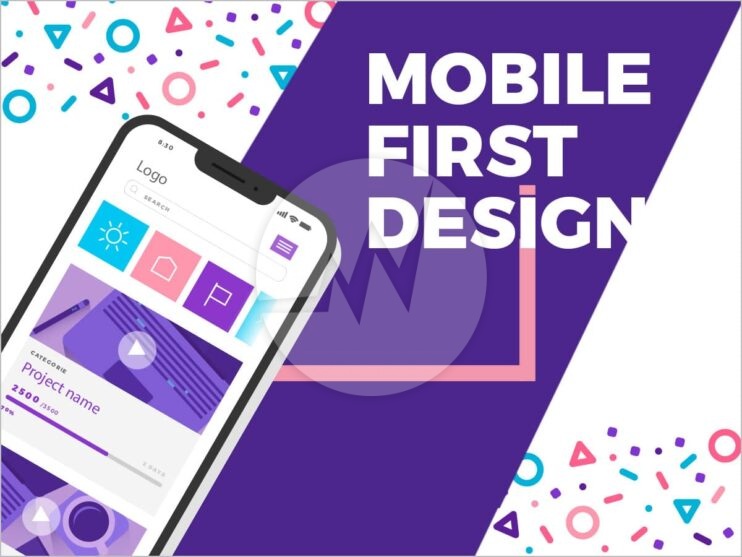How to Optimize Your Website for Mobile-First Design?

The popularity of mobile devices, i.e. smartphones and tablets, has been increasing for years. In today’s fast-paced world, they are therefore indispensable. More searches now are done on mobile devices than on desktops. A mobile-optimized website is, therefore, a must! Google has long responded to this: With the Mobile-First Index, Google has implemented a new ranking principle that makes mobile versions of websites a subject of evaluation. The user-friendliness of your mobile website thus decides your place in Google’s search engine ranking. Especially, now you should understand why it is so important to have a mobile website. In the following, we will show you what needs to consider and what optimization options there are for mobile websites.
Use Mobile First Index Era as SEO friendly content for your website
With Mobile-First Indexing, Google rates the search results based on the information found on the mobile version of your website. This means that only the content on your mobile website is taken into account for the ranking. Previously, the content of the desktop version used for the index. However, since the use of mobile devices for a Google search is increasing, the Googlebot crawls and indexes pages with the smartphone agent. Information that the “mobile” crawler was not shown is not taken into account in the ranking and can have a negative impact on the Google ranking. Regardless of whether this information is available in the desktop version. Mobile end devices are becoming more and more important, and so is the mobile Internet. Because of this, a short loading time must ensure when creating mobile websites. The content formats must also adapt to smaller screen sizes. There are different ways to build a mobile version of your website.
Here we present the most important ways
Here we present the most important ways:
Be Creative for desktop and mobile URLs
Here the mobile and desktop versions of the website are provided on different URLs. An attempt is made to recognize the user agent of the user in order to then forward it to the corresponding version. So that Google does not identify and penalize the two URLs as duplicate content, a connection to the identical websites must be created. The elements rel = “canonical” and rel = “alternate” are used to establish the relationship between the two URLs. Website content should be unique and unique.
Utilize Dynamic Provisioning Approach
With dynamic provisioning, all devices use the same URLs. Depending on which user agent is recognized, you will receive different source code variants (HTML and CSS). This depends on what the server can find out about the visitor’s browser. An important element in this approach is the Vary HTTP header. This decides which source code its outputs and then forwards the resources to the end device. The requested content is therefore adapted to the user agent of the respective end device using the Vary header.
Use Accelerated Mobile Pages (AMP) to speed up
Accelerated Mobile Pages (AMP) is an open source framework that speeds up the loading speed of websites on mobile devices. The framework is characterized by reduced JavaScript and CSS elements and the loading of content elements via a content delivery network. This has the advantage that the page can be set up quickly regardless of user location. The key to AMP is primarily to reduce the amount of data that needs to be loaded for the page.
Responsive web design optimization
The responsive design provides the same HTML code regardless of the end devices used and uses CSS to vary the display of the content depending on the screen size. This means that the layout of a website automatically adapts to the output medium and ensures a good user experience. The core of the responsive design is the use of flexible design grids and flexible content. Relative pixel values are used instead of fixed pixel values. Another essential element is the Viewport meta tag, which tells the browser how the dimensions and scaling should be adjusted according to the width of the device. This enables the display areas to be automatically adjusted as a percentage.
Conclusion
In summary, we recommend a responsive design for the optimization of your mobile website. Responsive design is the most common and flexible way to optimize your mobile website. It makes it easier for the user to share and link desktop and mobile content via the same URL. There is no need to create thousands of layouts for the multitude of different screen sizes. The responsive design automatically adapts to the output medium. Maintenance work is reduced for the operator of the website. The maintenance of the different pages (desktop and mobile) is not necessary since it does not have to be done twice. Google algorithms can be precisely assigned to indexing properties. It is not necessary to signal that a desktop and a mobile version are available. The loading time with responsive design is shorter since no forwarding is necessary to get a view optimized for the respective device. In addition, user agent-based redirects are more prone to errors, which underlines the user-friendliness of responsive design.
If you need help optimizing your mobile website, we are happy to assist you! If you are looking for a website design services, UX/UI web design, online store design, ecommerce website design, Please explore our website design services! We also provide website redesign services, online store redesign and ecommerce website redesign services. For more information, please explore our website redesign services!



